
| |
Malacca
- Land Steeped in History
|
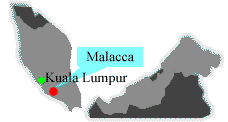
|
| |
 |
|
Malacca
is a historic city located on the west coast of
Peninsular Malaysia, about 147 Km south of Kuala
Lumpur, a state hailed by historians as the place
where Malaysia's rich history can be traced.
Malacca spans 1,658 sq.km, divided into Central
Malacca, Alor Gajah and Jasin. It was in Malacca
that the first Malay Sultanate was born;
it was Malacca that became the focus of the
first colonial activity in the East; and it
was Malacca that first received the news of
Malaysia's independence. |
| |
|
|
|
| |
Malacca
was founded by an exiled prince from Sumatra,
Parameswara, in 1400. It thrived as a
port-of-call to many a ship and merchant from
China, India, Arab and South America. In 1511, it
fell to the hands of the Protuguese followed by
the Dutch in 1641 after a fierce battle. In 1795,
Malacca was given to the British to prevent it
falling to the French when the Netherlands was
captured during the French Revolution. It was
returned to the Dutch in 1818 under the Treaty of
Vienna but was later exchanged by the British for
Bencoleen, Sumatra. With independence in 1957,
Malacca was restored to Malaysians. |
| |
|
| |
The
erstwhile conquerors of Malacca have left their
own indelible mark for posterity. A walk along
the narrow streets of the city will be a
memorable experience for there will always be
something to remind the visitor of the
significant events in the checkered history of
Malacca. |
|
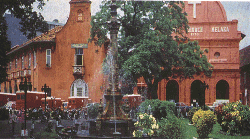 |
| |
HISTORIC
PLACES
|
|
|
| |
|
|
|
| |
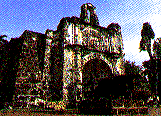 |
|
Famosa - The hallmark
of Malacca. Built by the Portuguese in 1511 as a
fortress, it sustained severe structural damage
during the Dutch Invasion. The Dutch had set to
destroy it but timely intervention by Sir
Stamford Raffles in 1808 saved what remains of A
Famosa today. |
| |
|
|
|
| |
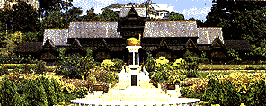 Malacca's Sultanate
Palace
Malacca's Sultanate
Palace
Built based on the description
and reference to the palace in 'Sejarah Melayu'
( the Malay Annals), the wooden replica houses
the Cultural Museum of Malacca. Situated at the
foot of St. Paul's Hill, it is the only Malay
palace from Malacca's glorious past built with
such detail and refinement.
|
| |
|
| |
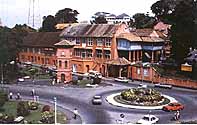 |
|
The Stadthuys - Built
in 1650 as the official residence of Dutch
Governors and their officers, the edifice is a
fine example of Dutch architecture. Preserved in
its original structure and form, it now houses
the Historic Museum and Ethnography Museum. On
display daily are fine traditional bridal
costumes and relics from Malacca's glorious
past. |
| |
|
|
|
| |
Cheng
Hoon Teng's Temple - The oldest
Chinese temple in the country. It was built in
1646 with materials shipped out of China. Fine
workmanship is evident in the ornately decorated
mythological figures, carvings, and lacquer work
inside the temple. Sam
Po Kong Temple
- Dedicated to Admiral Cheng Ho, the temple was
named after a fish that miraculously saved the
admirals ship from sinking after it had been hit
by a storm enroute to Malacca from China. The
fish mysteriously placed itself against a damaged
hull preventing the ship from taking on
water.
|
| |
Maritime Museum - The Museum
is constructed after 'Flor De La Mar', the
Portuguese ship that sank off the coast of
Malacca on its way to Portugal. With its hull
laden with invaluable treasures sized from
Malacca, the ship was doomed from existence had
it not for the efforts to revive its symbolic
significance to Malacca's heritage. |
|
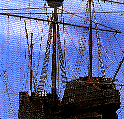 |
 
|






 Malacca's Sultanate
Palace
Malacca's Sultanate
Palace